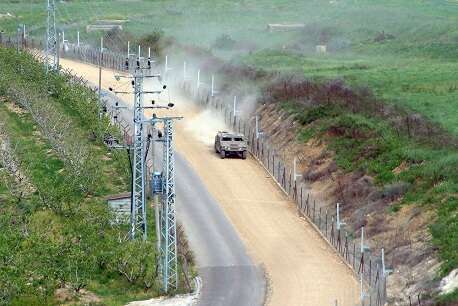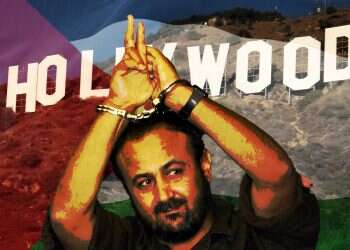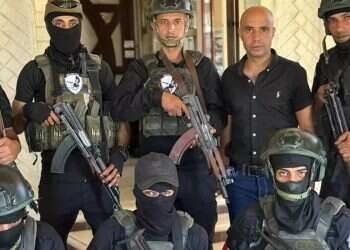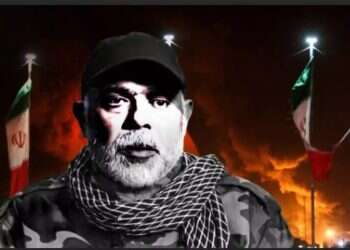This month, Israeli discourse has turned to the 20th anniversary of Israel's withdrawal from the security zone in Southern Lebanon. Tens of thousands of combat soldiers have joined a recently-opened Facebook group that provides a platform for the generation that fought there.
A new documentary series from public broadcaster Kan titled A War Without a Name is another contribution to the narrative of the distress of the war in the security zone. The generation of fighters who served there doubtless have a personal need to share, but questions such as what was there, why we were fighting, or how we got to the point where we were forced to withdraw all play a role in outlining the complex created due to years of fighting a battle that was not trying win anything. All this is taking another look at the foundations of Israel's perception of security, and one that has current relevance.
Follow Israel Hayom on Facebook and Twitter
Twenty years on, we enjoy the advantage of hindsight. But when I take a look at myself, it's important to mention what I saw at the time. As a combat officer, I enjoyed the operations in Lebanon. In the spring and summer of 1988, I was serving as a battalion commander in the security zone. As commander of the 7th Brigade and deputy commander of the 36th Division from 1993-1997, I followed the activity of the army units in south Lebanon from up close, and I have to admit that back then, I did not ask any deep questions about the underlying concept behind our fighting in the zone.
There was certainly reason to wonder how, despite the changes in Hezbollah's tactics – especially after Operation Accountability (1993) – the IDF deployment remained the same as it was when we first went into the security zone, using the same outposts and the same array of forces.
I certainly didn't think about the lack of a strategic purpose. The need to learn how to operate and adapt anew to Hezbollah's tactics presented a big enough challenge. In contrast to the 1973 Yom Kippur War, which saw a crisis of faith between the topmost command echelon and the troops on the ground, throughout our years in the security zone, the top ranks of the IDF's Northern Command were involved in every aspect of what was taking place there and had the trust of the soldiers doing the fighting. Even the 1997 helicopter disaster didn't cause any visible lack of faith in the upper ranks.
True, a war was being waged there that became increasingly complicated, as the IDF was confronted with guerilla warfare of a type it had never known. But above all, the dilemma between the purpose of holding onto the security zone for the sake of security Israel's northern communities and the need to defeat Hezbollah remained unsolved.
The IDF found itself pulled among three different goals. The first and most important: to secure our communities in the North. The second: to ensure that the South Lebanese Army (SLA) remained intact and to secure the civil population in the security zone while minimizing harm to IDF and SLA troops. The third: attacking Hezbollah forces and reducing its battle capabilities. Hezbollah identified the tension playing out between those three missions and maximized the potential that lay with keeping it running high.
The circle was vicious and simple. An attack on an SLA post, for example, would lead to artillery fire on Tyre and Sidon, which would cause harm to Lebanese civilians and would then, according to the understandings from Operation Accountability, give Hezbollah a reason to fire rockets at northern Israel communities, a situation that prompted frustration and questions about the basic purpose of our presence in the zone.
When Maj. Gen. Amiram Levin took over as GOC Northern Command, he easily identified the trouble that the tripartite tension was causing. But throughout his time in that position, he could not bring the chief of staff or the politicians around to his point of view. Dr. Ohad Leslau of the History Division in the General Staff Headquarters has written an in-depth and critical study of that issue. The study is classified, but its main conclusions are easily seen and should be made public.
Starting in the early 1990s, when Hezbollah entrenched itself in a way that allowed it control over South Lebanon, a major change took place. While the IDF was still defending border communities like Kibbutz Misgav Am from incursions by terrorists, Hezbollah was focusing its activities toward a goal and openly declared that its purpose was to liberate its homeland. Secretly, and of more importance and apparently under the direction of Iran, Hezbollah wanted to end the Israeli presence in South Lebanon and thereby strike a blow to Israel's image of military superiority by underscoring its inefficacy in either winning or defending all its vulnerabilities.
The organization responded to the death of its co-founder, Abbas al-Musawi, in an IAF strike in 1992 by bombing the Israeli Embassy in Argentina a month later. Two years afterward, in a response to a stealth IAF strike on a Hezbollah training camp in Ein Dardara that killed 30-40 Hezbollah operatives, the AMIA Jewish community center in Buenos Aires was bombed. It's true that for years, Palestinian terrorist groups had already been carrying out attacks on Israel by hitting overseas targets, like the murder of the Israeli athletes at the 1972 Munich Olympics, but Hezbollah upgraded that strategy: it packaged its actions abroad as a strategy of deterrent response, tying them directly to developments in the fighting in Lebanon.
Hezbollah also used its rocket attacks against the Israeli home front differently than the Palestinians did. Supposedly, the targets remained the same: Kiryat Shmona and Nahariya. Hezbollah's goal, like that of the Palestinians, was to spread terror throughout the Israeli home front, its strategic use of rocket fire was much more sophisticated.
After the understandings that followed Operation Accountability and later Operation Grapes of Wrath (1996), the rocket fire was used for a much more focused purpose – to trap Israel in terms of strategy and tactics. As far as strategy, Israel was embarrassed by failing to meet its goal of holding onto the security zone, which was to ensure security for its northern communities, and could not accept a situation in which the fighting to defend the IDF and SLA was what was prompting the rocket fire that posed a threat to those communities. On the tactical level, when it came to the equation of deterrence that Hezbollah had set, the IDF was limited in terms of using its superior capabilities to restrain the organization's offensive initiatives.
Throughout the years the security zone existed, it suffered from an image of marginal importance compared to the rest of the efforts by the IDF General Staff. For the forces that were actually fighting there, from the squad leaders through the GOC, their service in Lebanon was the jewel in the crown of their operational experience. But starting in December 1987, the defense establishment was confronted with the First Intifada. Starting in September 1993, the General Staff was busy implementing the Oslo Accords, and that entire time was also busy preparing itself for a possible war with Syria. This is a matter that needs to be closely evaluated, and the General Staff as well as the defense establishment at large need to be willing to hear about a number of systemic challenges at once.
For years, the IDF has been criticized for supposedly neglecting the desire to achieve victory. The expression "Let the IDF win" is a simplistic slogan that prevents an in-depth understanding of the conditions that led to the phenomenon. A renewed look at the war in the security zone is a vital lesson in understanding the change that Hezbollah instituted in how wars against Israel are fought. The later years of the fighting in Lebanon are laboratory conditions to look at in terms of a strategic trap, at a time when it is urgent to put form the concept of Israeli security necessary for victory.




